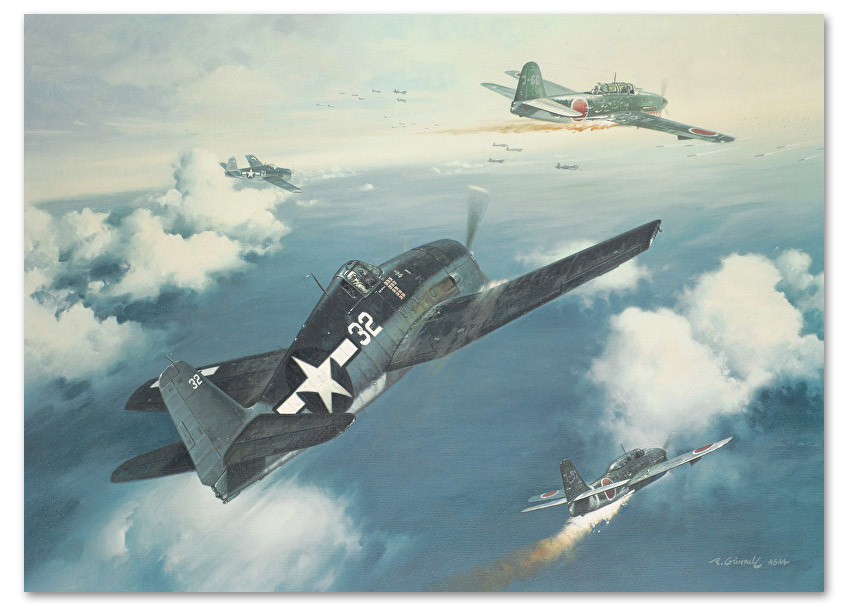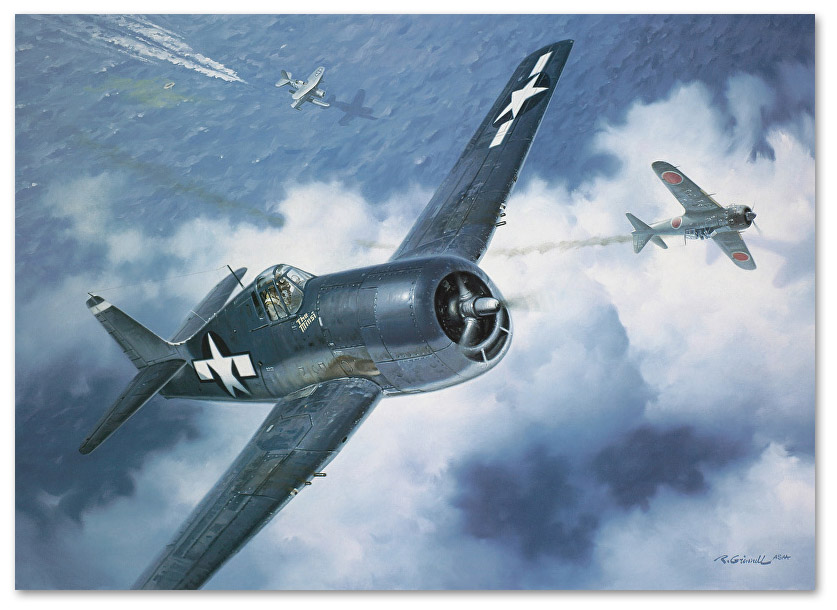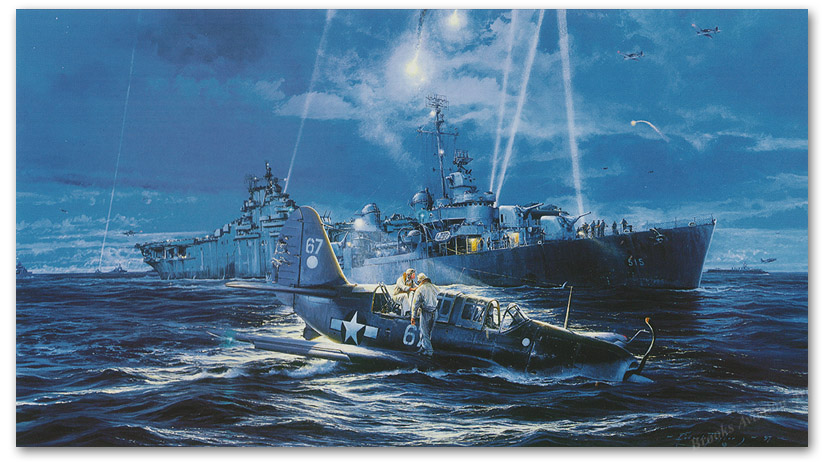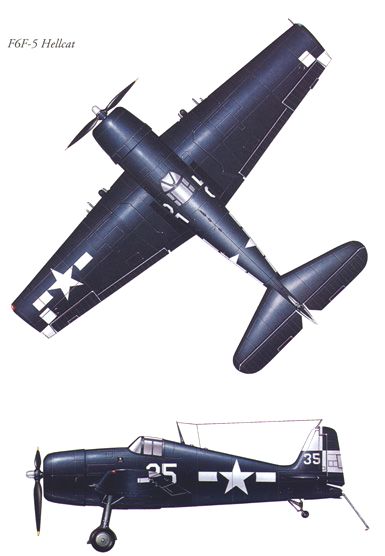|
Posted on 06/22/2003 4:32:16 AM PDT by snippy_about_it
|
|
 are acknowledged, affirmed and commemorated.
|

| Our Mission: The FReeper Foxhole is dedicated to Veterans of our Nation's military forces and to others who are affected in their relationships with Veterans. We hope to provide an ongoing source of information about issues and problems that are specific to Veterans and resources that are available to Veterans and their families. In the FReeper Foxhole, Veterans or their family members should feel free to address their specific circumstances or whatever issues concern them in an atmosphere of peace, understanding, brotherhood and support.
|
|
|
|
19-20 June 1944 In September 1943 Japanese Imperial Headquarters resolved that in the near future the entire strength of their fleet would be deployed against the US Navy in a great decisive battle, and that in this battle the enemy fleet would be destroyed "in one blow." By the Spring of 1944 Japanese commanders had decided that the decisive encounter was imminent, and on 3 May the order for the operation - "A-Go" - was issued.  The A-Go Plan was based on the assumption that when the great battle came about the American fleet would be carrying out an offensive in the Central Pacific and that the Japanese would therefore have the advantage of numerous island air-bases within range of the scene of battle. The Japanese command knew that their forces would suffer from a considerable inferiority in carrier airpower, and they were therefore depending on their own land-based air-power to redress the balance. On June 15 1944 the initial US landings in the Marianas took place - on the island of Saipan. The Japanese had been hoping and expecting that the American attack would come in the Carolines or the Palaus, to the south of the Marianas, and closer to the main Japanese sources of fuel. Their land-based aircraft had been disposed accordingly - with relatively weak forces in the Marianas. Thus the great operation began with a setback for Japanese strategic hopes. Another blow to their expectations was that the threat from American submarines restricted Japanese carriers to their anchorage, so that they were unable to conduct proper flight training in the run-up to the battle.  Lieutenant Vraciu shot down six Japanese aircraft in less than eight minutes. One aircraft was destroyed as it tried to crash into an American destroyer. A preliminary US carrier strike in the Marianas on June 11 persuaded Admiral Toyoda, C-in-C of the Combined Fleet, that this was where the next landings would take place, and accordingly Japanese forces began to converge on the Marianas for the decisive battle. Their main groupings made rendezvous on June 16 in the western part of the Philippine Sea and completed refuelling on June 17. By the evening of that day Admiral Ozawa, commanding the Japanese forces, had reasonably accurate intelligence of the composition of the US fleet. A few minutes after midnight 17/18 June, Ozawa - in the tradition of the Japanese Navy - issued a final exhortation to all the ships of his fleet : "This operation has an immense bearing on the fate of the Empire. It is hoped that all forces will do their utmost and attain results as magnificent as those achieved in the Battle of Tsushima." The Japanese forces had been sighted by American submarines as early as June 15. By June 16 Admiral Spruance, commanding the US Forces (the Fifth Fleet), was satisfied that a major sea battle was approaching, and made plans accordingly. By the afternoon of June 18 Task Force 58 (the Fast Carrier Task Force under Admiral Mitscher) was concentrated near Saipan ready to meet the Japanese fleet.  More intelligence of the Japanese fleet's movements, from submarines and radio intercepts, came in during June 18. Shortly before midnight 18/19 June Admiral Nimitz sent Spruance a message from Pacific Fleet Headquarters indicating that the Japanese flagship was approximately 350 miles to the west-south-west of Task Force 58. Shortly afterwards Mitscher sought Spruance's permission to head west during the night to what - as Mitscher and his staff considered - would be an ideal launch position for an all-out dawn air attack on the enemy force. However, Spruance refused. Throughout the run-up to the battle he had been concerned that the Japanese would try to draw his main fleet away from the landing area using a diversionary force, and would then make an attack around the flank of the US carrier force - an "end run" - hitting the invasion shipping off Saipan. Such methods were a long-standing part of the Japanese Navy's tactical doctrine . Spruance was intensely conscious that protection of the invasion shipping was his paramount responsibility, and should therefore take precedence over the destruction of the Japanese fleet. Moreover, the Admiral considered, as he was later to observe, that "if we were doing something so important that we were attracting the enemy to us, we could afford to let him come - and take care of him when he arrived." In effect this was to be what happened during the battle.  Mitscher and his staff were aghast at Spruance's decision. Captain Arleigh Burke, the Task Force 38 Chief of Staff, bitterly commented that it "meant that the enemy could attack us at will at dawn the next morning. We could not attack the enemy." The Fifth Fleet Commander was adversely criticised by many naval officers after the battle and continues to be condemned - by some writers - to the present day. A still common allegation is that Spruance decided as he did because he was not an aviator, and therefore must have had an inadequate understanding of the principles of carrier warfare. At dawn - 0430 - on 19 June Task Force 58 was steaming E by N about 150 miles to the WSW of Saipan and about 100 miles to the NW of Guam. This huge fleet - with nearly 99,000 personnel on board - was disposed in five groups - the four carrier groups and Admiral Lee's Battle Line.  First came the three stronger carrier groups in a north-south line abreast, with the centres of the groups 12-15 miles apart. Due west of the middle group of this line steamed Task Group 58.7 - Lee's Battle Line - with the weakest carrier group - Harrill's Task Group 58.4 - sailing within visual distance to the north of it. The carrier groups were each disposed in a circle four miles in diameter (with the carriers in the centre of their respective groups but having plenty of room for safe manoeuvering while under attack), and the Battle Line was arranged in a circle about 6 miles in diameter, with the battleship Indiana as guide at the centre of this circle. The formation covered an area of sea roughly 35 miles by 25 miles. At 0530 the task force turned north-eastwards, directly into the wind, and began to launch combat air patrol, anti-submarine patrols, and search missions. At 0619 Spruance ordered a change of course to WSW, hoping thereby to place the fleet closer to the as-yet unlocated enemy forces. But the carriers had to turn back into the wind whenever they were launching aircraft, and at 10am Task Force 58 was in almost exactly the same position as it had been at dawn.  The A-Go plan called for about 500 aircraft to be available on the land bases in the Marianas. In fact - partly because of the damage inflicted by the American carrier forces in strikes made between 11 June and 18 June - there were a mere 50 or so, all of them based on the island of Guam. The first attack of the day came at 0550 when a scouting Zero from Guam attacked the picket destroyers of the Battle Line and was shot down. The next action took place over Guam when Hellcats from the light carrier Belleau Wood, investigating a radar contact, encountered Japanese aircraft taking off from Orote Field. At 0807 more Japanese aircraft were detected by radar, heading towards Guam. These were reinforcements flying in from other Japanese-held islands. Fighters were vectored out to intercept them and there was continuous fighting over and around Guam for nearly an hour. 35 Japanese aircraft were shot down, but others were still taking off from Orote when the Hellcats received a "Hey Rube!" signal (calling them back over the carriers) from the task force flagship. Task Force 58 had detected large numbers of unidentified aircraft approaching from the west. These were the planes of the first attack wave from Ozawa's carriers, 68 or 69 aircraft in all.
|

After a three day sea search for Admiral Omwa's carrier fleet it was 3:30 p.m. on June 20, 1944, when a spotter plane reported the enemy position to Admiral Mitscher's Task Force 58. Mitscher knew the risks of dispatching a large force on such a long-range mission so late in the day, but he also knew his task was to get the carriers. By 4:30 p.m. over 200 fighters, dive-bombers, and torpedo strike planes were in the air and heading for the target.
In the short but intense battle that followed late that day, the Japanese carrier Hiyo was sunk, four more Japanese carriers were damaged, two oilers sunk, the battleship Haruna hit, and some 40 enemy aircraft reported destroyed. Fierce, and seemingly successful though the encounter was, for most of the American aircrews the worst part of the mission was yet to come.
As 209 aircraft turned and headed east into the growing dark, most of the pilots knew they had barely enough fuel to get back on board their carriers, some 270 miles distant. Many of the aircraft had received battle damage, and some of the crews were wounded.
It was 8 p.m. and pitch dark as the first of the returning aircraft neared the carriers. Admiral Mitscher knew that without some form of guidance it was going to be impossible to recover his aircraft and, ignoring the submarine threat, boldly ordered the fleet to turn on lights. But the arriving Helldiver and Avenger pilots were all but out of fuel and in the confusion of trying to pick out a carrier and find a landing slot, compounded by a number of deck crashes, some 70 planes went into the water that night. For Mitscher's aircrews, the long return to TF-58 went into history as the 'Mission Beyond Darkness'.
In recreating this awesome scene, Robert Taylor has painted a masterpiece of naval aviation warfare in the Pacific. In the foreground the SB2C Helldiver of Lieutenant Ralph Yaussi, its tanks dry, has ditched near the carrier USS Lexington. As Yaussi and his gunner James Curry clamber out of the sinking aircraft, the Fletcher class destroyer USS Anthony, her 24 inch searchlight ablaze is moving in to make the pick-up. The chaos and confusion of that infamous night during the Battle of the Philippine Sea, springs back to life in this stunning painting.
Hi Jen! Sorry I missed you last night.

Well, hopefully Sam will regain his freedom very soon and will be able to help you.
LOL!!!
FREEDOM!!!

Without doubt, the best carrier-based fighter of World War Two, was the Grumman F6F Hellcat. A larger and more powerful development of the earlier F4F Wildcat, the Hellcat was designed to counter Japan's excellent Zero fighter. The Hellcat was armed with six .50 caliber machine guns as well as rockets, and the wings folded flat against the fuselage so more could fit on board aircraft carriers. The Hellcat's design sacrificed speed for a high rate of climb and exceptional maneuverability. It was also a very rugged and well armored design. The Hellcat first flew in June 1942 and was deployed operationally in the Pacific in August 1943 where it participated in every major engagement of the war. At one point in 1944 Grumman was turning out one Hellcat per hour - 644 in one month - an aircraft production record which has never been equaled. A total of 12,275 were built.






Patterned after the Hornet (CV-8), the Essex Class Carriers were to receive some significant structural changes. The Essex would be designed to carry two squadrons of airplanes versus the normal load of one squadron. This increase in planes would necessitate and enlargment of both the flight deck and hull. More stowage space for fuel and armaments called for a thicker hull to protect these vital materials. An elevator was positioned on the side of the carrier allowing uninhibited usage during flight operations. The superstructure or "island" would comprise the command center along with the captain's bridge. This increase in size would also allow for improved visibility to aid in ship handling. Consequently, these structural changes would increase the ships displacement requiring an expansion is ship power requiring eight Babcock and Wilcox boilers. These boilers would be used to produce enough horsepower to propell the ship at over 30 knots.

IJN Shokaku under attack by U.S. aircraft.

Taiho Fleet Carrier
Similiar in desaign to the earlier Shokaku class, Taiho was Japan's largest purpose-built aircraft carrier and the first to feature an armored deck. Total armor weight on this ship came to 8,800 tons which was a very high number for an aircraft carrier. She was destroyed only a few weeks after entereing service by a single torpedo hit from the US sub Albacore which ignited fuel vapors and blew her up.
Two more vessels were planned to her design and a further 5 to a modified design.

IJN Hiyo


Sam's inlaws are not at the airport. We control the airport.
Looks like you're having a good time. That's great.
I'm doing well, thanks. I'll be working during the summer giving Italian lessons, but that's OK, it's money in my pocket, hehehe.
Disclaimer: Opinions posted on Free Republic are those of the individual posters and do not necessarily represent the opinion of Free Republic or its management. All materials posted herein are protected by copyright law and the exemption for fair use of copyrighted works.